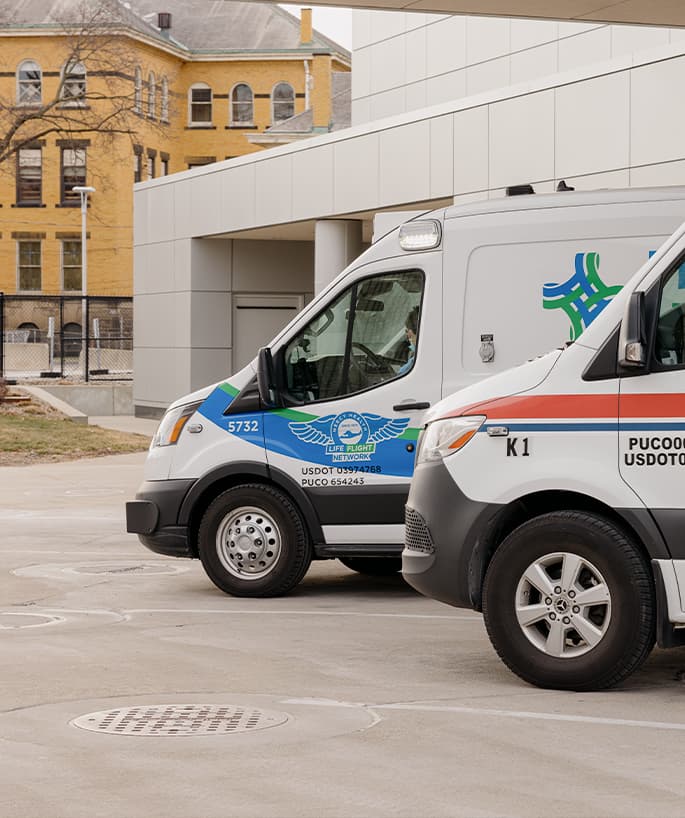Hanna Patterson |
On an unassuming Friday morning in February 2022, the CEO of UCHealth, a healthcare system based in Colorado, announced a bold education-benefits initiative called the Ascend Career Program. Its goals were implicit but obvious: amidst severe labor shortages and rising recruitment costs, Ascend aimed to retain critical frontline workers by enabling career advancement from within.
Yet the program also represented a critical test of faith: Could investing in existing employees to this degree really solve UCHealth’s talent challenges? The answer came swiftly. Within a week, 2,500 employees (roughly 9% of the workforce) had signed up. Today, these “Ascenders” are not just vying for top roles in the organization but embodying UCHealth’s mission and values in ways outside hires rarely did or can.
Debunking the myth of the ‘ideal’ external hire
“There was this idea for the longest time that internal candidates weren’t going to be quite as good as that perfect candidate you could find externally,” explained David Mafe, the organization’s chief diversity officer and VP of HR. But as Ascend gained traction, so did the realization that those external “ideal” candidates were, more often than not, a myth.
As even Mafe will attest, however, it was one thing to launch an education-benefits program with the goal of retention. It was yet another to make it transformative. Many organizations have poured resources into learning and development, only to see limited returns. So what has set Ascend apart?
I sat down with Mafe and Leigha Bell, a certified nursing assistant (CNA) at UCHealth, at Becker’s Hospital Review’s 12th Annual CEO + CFO Roundtable in Chicago last month to explore those questions. What emerged from our conversation were five critical success factors that organizations across industries and geographies should consider when developing talent strategy.
1. A financing model that takes employee debt ‘off the table’
Unlike traditional tuition-reimbursement programs, which require employees to pay upfront and receive reimbursement only if they meet certain conditions, Ascend covers educational costs from the start. This upfront financial support enables employees like Bell to pursue certifications and degrees without the burden of out-of-pocket expenses or debt.
After completing her phlebotomy certification through Ascend, Bell is now on track to become a registered nurse. “The fact that my financial burden would no longer be there was a huge impact on my life,” she said.
According to Guild data, four out of five healthcare employees with no college experience select tuition assistance programs when their employers offer both tuition-assistance and tuition-reimbursement funding options. Mafe added that this approach is fundamentally about creating equitable access to career growth. “If you’re familiar with academic health systems, the term ivory tower comes into play a lot, and that basically means that we don’t seem to be as accessible to the communities we serve,” Mafe said. “With this program, we took debt off the table as it relates to the ability for folks to climb socially, grow their careers, and make more money – which improves the health of the communities we serve.”
2. A more holistic approach to career coaching
Central to Ascend’s success is a coaching philosophy that puts student success first. “As soon as you complete a profile to participate in the program, somebody reaches out to ask what you want to do and how they can support you to be successful,” Mafe said. This sets the tone for a relationship built on trust and complete support, he explained.
But as UCHealth made clear from the start, Ascend coaches must also be personalized advocates, motivators, and mentors. They need to help people overcome challenges and stay focused. This is especially critical in healthcare, where many frontline workers face uniquely demanding schedules. Coaches serve as a critical lifeline, keeping enrollees engaged and optimistic about their future, even when the burden of balancing work, education, and family responsibilities feels like too much.
Coaching is especially important in helping people recognize career pathways they might not have seen before. For many, the question isn’t just about earning a certification or degree — it’s about understanding what comes next. Coaches help them take the steps required to transition into new roles.
“Many people know where they want to go but have no idea how to get there,” Mafe said, adding that coaching sends a clear message to staff: “We are 100% behind you.” This level of commitment fosters loyalty and reduces the likelihood of turnover, a critical advantage in an industry where recruitment costs are high.
3. The integration of DEI goals into education-benefits strategy
Mafe underscored a common issue facing many organizations: diversity is often concentrated at lower levels of the organization. The Ascend program is designed to address this by creating career pathways for frontline employees to move into higher-skilled roles, ensuring that diversity is distributed more evenly across the organization.
“One of our DEI goals is to build our workforce in such a way that we can meet our mission of improving lives today and into the future – and that means identifying different workforce pipelines, whether those be external or internal,” Mafe said, stressing that Bell is a good example of a motivated individual who “just needs some opportunity.”
As Mafe put it, diversity is simply a “fact” reflecting the differences among individuals, while equity represents the work necessary to level the playing field. Inclusion, meanwhile, is a “choice” that requires active engagement, curiosity, and intervention.
4. A strategic, but sensible, use of data
To bridge the gap between education and employment, UCHealth focused on developing a data-driven approach that provides both employees and employers with clear pathways for career advancement. Through Guild’s platform, UCHealth can track employees’ progress in various programs, giving hiring managers insights into upcoming talent within the organization. This approach enables UCHealth to proactively engage employees before they graduate, ensuring a smooth transition into new roles.
For frontline employees, this means that they’re not left in the dark about what’s next. As Bell works toward her nursing degree, she and her manager have a clear view of the milestones ahead, making it easier to plan for her future within UCHealth. This isn’t just about filling roles; it’s about building a pipeline of dedicated healthcare professionals who are connected to their work and committed to the mission of their organization.
“The data can tell us that we have three people in a particular region who are going to be graduating with their medical-assisting certification in a month,” Mafe said. “We should probably start the conversation now on what they might want to do next.”
Thoughtful use of data has enabled UCHealth to bring L&D investments into closer alignment with business goals – at a time when budgets are tighter and under more scrutiny. L&D leaders often track the success of a L&D investment by metrics such as usage and NPS scores, when they should be looking more rigorously at productivity, roles filled, internal mobility rates, job changes, or – in UCHealth’s case – succession planning. Currently, only 23% of companies integrate business data with HR data — a missed opportunity for making learning a strategic tool that responds directly to company needs.
5. Visible involvement and support from direct managers
Education-benefits strategy works best when direct managers embrace the idea of talent development and provide their teams with the support they need to learn and grow. In Bell’s case, it was her manager who told her about UCHealth’s partnership with Guild – and, specifically, a phlebotomy certification program. In 2022, Bell became the first CNA on her unit who is also a certified phlebotomist.
Bell’s manager’s support didn’t just help her acquire new skills; it served as a public acknowledgement of her value and potential and reinforced her commitment to UCHealth.
But here, Bell’s manager went a step further, creating an environment where ideas and aspirations are not only welcomed but actively supported. “Anytime I have a question or an idea to improve the unit, my management and educator are always ready to listen,” Bell said. This dynamic underscores the importance of managerial advocacy in ensuring employees feel valued and empowered to excel.
Beyond vacancy filling
UCHealth’s Ascend program offers a compelling model for reshaping workforce retention and development in healthcare. By combining accessible financial support, tailored coaching, a focus on DEI, data-driven planning, and manager involvement, Ascend has succeeded in creating a talent pipeline that benefits both employees and the organization. This approach goes beyond simply filling vacancies; it nurtures a culture of growth, loyalty, and shared purpose. Said Mafe, “We’re not going to hire our way out of our challenges. The population is aging. Finding qualified and experienced people is not nearly as easy as it once was.”



